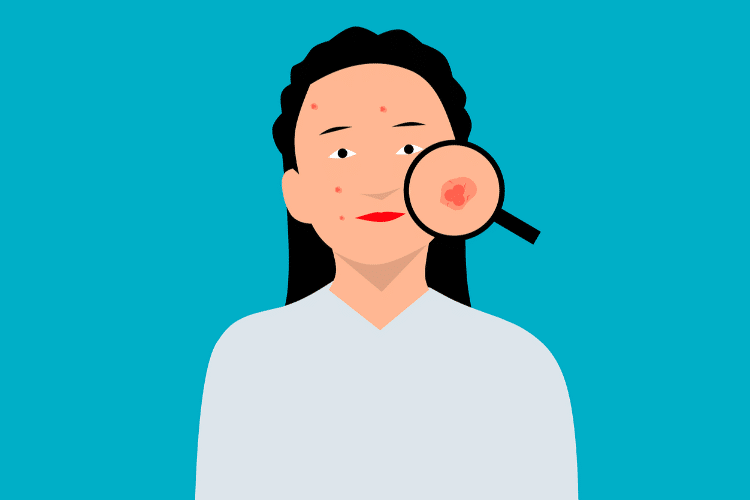
How to Keep Your Skin Hydrated in the Cold, Dry Winter Months
In this article, you’ll learn and discover how to keep your skin hydrated in the cold dry winter months.
There is no doubt that winter can be a lovely and serene time of year, especially if you live in a part of the country that gets snow during the winter months. But for all its picturesque moments, it can also be rather hard on the body thanks to the cold, harsh, dry temperatures that can feel as though they are sucking every ounce of moisture from your skin. The radiant, glowing, plump, and soft skin that you may have enjoyed in the summer is often quick to disappear once the temperatures drop. This can leave you with dry, flaking, dull, itchy, and uncomfortable skin.
If you’ve decided that this year you are going to take control of the condition of your skin and ensure it stays healthy no matter what the weather is outside, then these tips should help you do just that.
Table of Contents
Ditch the Drugstore Moisturizer and Use Oils Instead
While your first instinct may be to slather moisturizer on your face and body multiple times a day, often it won’t prove enough. If your skin is particularly, dry that moisture will be sucked up right away and your skin could feel dry again within hours.
Instead, why not opt for a natural solution and use natural oils? There is a number that has been shown to be incredibly effective in hydrating your skin and even helping with redness and inflammation. Contrary to what you may think, these natural oils won’t clog up your skin and cause a breakout.
As for the best natural oils to use – there are a few standouts. Some of the most effective include Rosehip seed oil which also has anti-aging benefits, Argan oil that has soothing properties, coconut oil which acts as a barrier keeping all that moisture in your skin, jojoba oil which is great if you suffer from acne, and marula oil which has a really lightweight texture.
Best Oils
Essential Oils
- Rose
- Sandalwood
- German Chamomile
- Geranium
- Jasmine
- Lavender
- Neroli
- Ylang Ylang
- Hyssop
- Patchouli
- Rosewood
- Palmarosa
- Rosemary
- Spikenard
- Carrot Seed
- Vetiver
- Cedarwood Atlas
Carrier Oils
- Almond
- Olive
- Avocado
- Apricot Kernel
- Wheatgerm
- Soya Bean
Herbs
- Violet Flowers
- Red Clover Flowers
- Marshmallow Root
- Rosemary Leaves
- Comfrey Leaves
- St. John’s Wort
- Elder Flowers
Types of Cleaners
These are guidelines for the types of cleansers, toners, masks, moisturizers, etc you should use for dry skin.
Cleanser
If you are not dealing with make-up, lots of dirt, or poor air quality, dry skin only needs to be cleaned once a day. Use water-soluble cleansing creams that do not remove the natural oils rather than foaming cleansers that are more drying.
Steam
Facial steams are great for dry skin. Keep the sessions short, five minutes at most. Once every week or two is enough.
Exfoliation
Gentle herbal scrubs are best. Use one with an oatmeal base.
Mask
Use an emollient mask with ingredients like egg yolks, whole milk, yogurt, honey, and avocado because these ingredients contain oils that moisturize the skin. Best to avoid oatmeal and clay as they are very drying.
Toner
Don’t use alcohol. Rosewater and Aloe Vera work great. Diluted Apple Cider Vinegar also works well because it helps tone and softens the skin.
Moisturizer
Use rich facial creams that include liposomes. If you wear foundation make-up, use one that contains moisturizers. Also use products that contain a small amount of glycerin, which attracts water.
Recipes
These recipes can help out dry skin with essential oils, carrier oils, and other ingredients that moisturize the skin. Always test on a small part of your skin first before using all over your face. Please be sure your skin can handle the blend before being covered in it.
Apply to face nightly.
Dry Skin Care (Recipe 1)
- 10 drops Sandalwood
- Ten drops Rosewood
- 10 drops Lavender
- 2 tablespoons Avocado oil
Combine all ingredients. Before using, wash skin thoroughly, then massage a portion of the formula into your face. Use daily.
Dry Skin Care (Recipe 2)
- 10 drops Benzoin
- 8 drops Rosemary
- 8 drops Geranium
- 4 drops Lavender
- 2 tablespoons Flaxseed Oil
Combine all ingredients into a dark colored, glass bottle. Wash skin thoroughly and massage a portion of the formula into your skin. Apply daily.
Use a Humidifier in Your Home
Installing a humidifier in your home will also help where hydration is concerned. It will add moisture to the room, which your skin can drink up.
Resist the Hot Showers and Bath
Even though the idea of a hot shower or bath can sound great, it can be quite harsh on your skin. Instead, experts recommend a warm bath or shower that is gentler on your skin, and a mild fragrance-free cleanser that won’t strip it of oils.
When You Need a Little Extra Help
Sometimes, even when you follow all the right steps and use the best products, it’s still not enough to get your skin back to that healthy hydrated condition that you’re aiming for. This is when a little bit of extra help from a professional can help.
SilkPeel® Dermal Infusion, performed by Coberly Plastic Surgery & Med Spa, is liquid microdermabrasion that is medical grade and is meant to target a variety of skin issues. One of the issues it can help with is dehydration, leaving you with more supple skin. At the same time, it can also address common issues like sun damage, hyperpigmentation, and even acne. This treatment could be that added boost you need to give you the results you had set out to achieve.
These tips will ensure that you are on your way to hydrated skin.








